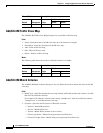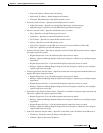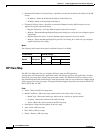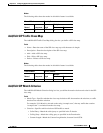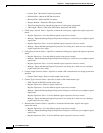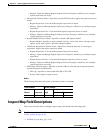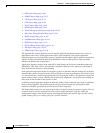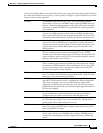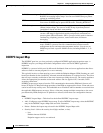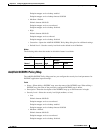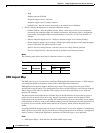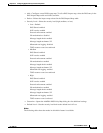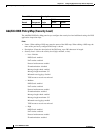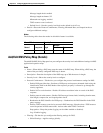
24-60
Cisco ASDM User Guide
OL-16647-01
Chapter 24 Configuring Application Layer Protocol Inspection
Inspect Map Field Descriptions
• DNS Inspect Map, page 24-64
• ESMTP Inspect Map, page 24-71
• FTP Inspect Map, page 24-79
• GTP Inspect Map, page 24-84
• H.323 Inspect Map, page 24-89
• HTTP Inspect Map, page 24-95
• Instant Messaging (IM) Inspect Map, page 24-103
• IPSec Pass Through Inspect Map, page 24-106
• MGCP Inspect Map, page 24-109
• NetBIOS Inspect Map, page 24-112
• RTSP Inspect Map, page 24-113
• SCCP (Skinny) Inspect Map, page 24-115
• SIP Inspect Map, page 24-120
• SNMP Inspect Map, page 24-126
The algorithm the security appliance uses for stateful application inspection ensures the security of
applications and services. Some applications require special handling, and specific application
inspection engines are provided for this purpose. Applications that require special application inspection
engines are those that embed IP addressing information in the user data packet or open secondary
channels on dynamically assigned ports.
Application inspection engines work with NAT to help identify the location of embedded addressing
information. This allows NAT to translate these embedded addresses and to update any checksum or
other fields that are affected by the translation.
Each application inspection engine also monitors sessions to determine the port numbers for secondary
channels. Many protocols open secondary TCP or UDP ports to improve performance. The initial session
on a well-known port is used to negotiate dynamically assigned port numbers. The application inspection
engine monitors these sessions, identifies the dynamic port assignments, and permits data exchange on
these ports for the duration of the specific session.
In addition, stateful application inspection audits the validity of the commands and responses within the
protocol being inspected. The security appliance helps to prevent attacks by verifying that traffic
conforms to the RFC specifications for each protocol that is inspected.
The Inspect Maps feature lets you create inspect maps for specific protocol inspection engines. You use
an inspect map to store the configuration for a protocol inspection engine. You then enable the
configuration settings in the inspect map by associating the map with a specific type of traffic using a
global security policy or a security policy for a specific interface.





